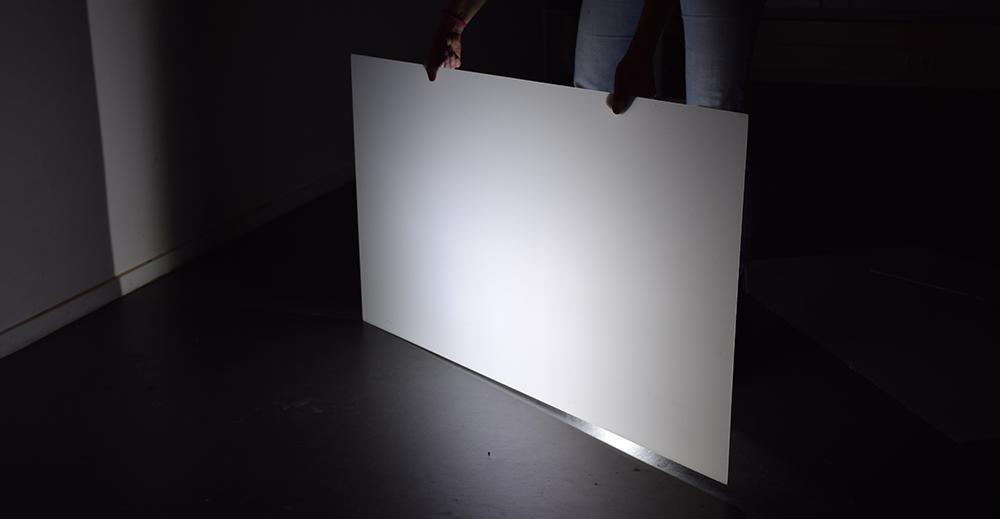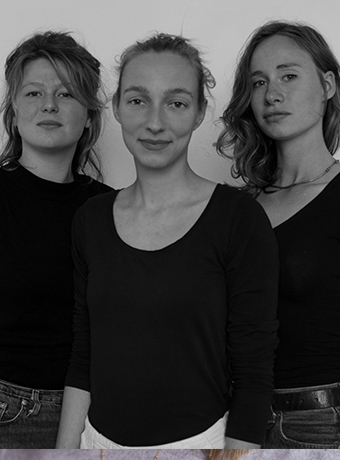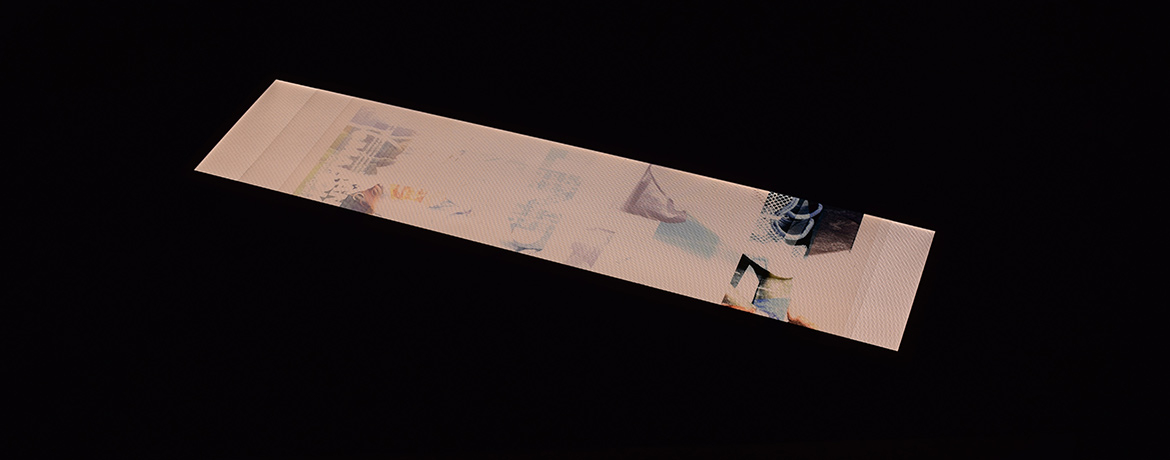Ad.Empty Domination
M. Watjer, J. Pielkenrood en W. BrandNot only online, but also offline, we are flooded by hidden messages that encourage us to buy or do something. Along the road and at stations, an endless stream of advertising posters and videos repeats itself. What impact do these images have on us? Jasmine Pielkenrood, Maria Watjer, and Wies Brand let us pause and reflect on this daily overstimulation with their artwork AD. Empty Domination.
Two enormous light boxes used for outdoor advertising are displayed prominently on an Amsterdam dock. No catchy advertising messages, but bright white light shines out of the advertising columns. If you look closely, you see the light slowly changing into the contours of advertising posters. Where has the content gone?
These billboards don't present you with screaming images, but with an overwhelming nothing. Pielkenrood, Watjer, and Brand: "The concept – the idea behind it – plays a significant role in our work. Nowadays, we are overwhelmed by advertising images and all kinds of other information. Advertisements define our streetscape, but what does that mean for us?" By adapting the form and content of the shelters, the artists hope that passers-by will reflect on the impact that advertising images have on their daily lives. The light boxes show a flatline of the overwhelming flow of images, so to speak.
"With our artwork, we hope to make the viewer aware of the madness of information that we have to deal with every day. With AD. Empty Domination, we take back the public space."

The artists like to experiment with putting an everyday object into a new perspective. "We see the theme of disruption as an essential theme within the arts. By creating chaos and making an impact, 'the things as they are' are broken down, and there is room for something new; new ideas, new ways, and new perspectives." AD. Empty Domination is the sixth work of art resulting from the collaboration between Amsterdam Light Festival and the Breitner Academy.

M. Watjer, J. Pielkenrood en W. Brand
Maria Watjer (NL, 1994), Jasmijn Pielkenrood (NL, 1997) and Wies Brand (NL, 1997) are students of the Bachelor’s degree in Visual Arts and Design at the ‘Breitner Academie’ in Amsterdam. They will create a light artwork for the public space for the first time. They like to surprise themselves and the audience by putting the everyday in a new perspective. All three of them create art in which experiment is paramount and having a critical view on their environment. They regularly ask themselves: “How could we do this differently?”.
